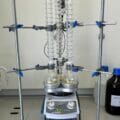Clinical trials are an expensive and risky business. The investment of time, resources and costs grows with progression through the clinical trials process. This often results in companies managing a delicate balancing act between filing early during the clinical trial period and having enough data at the time of filing.
Trainee patent attorney Victoria Seville explains why it is important to be able to skilfully navigate this tightrope to ensure that your IP protection stands up to scrutiny.
Timing considerations
In the life sciences sector, new patent applications are frequently filed at a very early stage in the discovery or development process. This is particularly true for small to medium size pharmaceutical companies, who may need the patent protection to secure sufficient funding for later phases of clinical trials.
There are important timing considerations when filing patent applications that cover the results of a clinical trial, particularly in situations where the clinical data is not yet available.
Waiting to file your patent application until the results of the trial have become internally known can be very risky. There is always the risk that somebody else publishes something pertinent, or that confidentiality is not maintained for one reason or another.
However, if the application lacks supporting data on filing, this may lead to objections related to plausibility later down the line.
The requirement for ‘plausibility’ can be considered as an attempt to exclude from patent protection theoretical inventions which are based, at the time of filing the patent application, purely on assertion.
A patent cannot be invalidated in the UK or Europe for lacking plausibility as such – the concept is most commonly raised in relation to either sufficiency of disclosure or inventive step. Importantly, a lack of plausibility cannot be remedied after a patent application is filed.
Both the EPO and the UK Courts have acknowledged that full clinical trial data is not essential for patent applications directed at medical therapies, however it is still vitally important to ensure that the available data is sufficient to demonstrate the technical effect of the invention. For second medical use claims, this requires showing that the claimed technical effect can be achieved throughout the claim scope.
The more unexpected the technical effect, the more important it is to provide technical evidence in the patent application as filed.
Putting plausibility to the test
A recent law suit involving generic drug manufacturers Sandoz and Teva against US pharmaceutical giant Bristol Myers Squibb (BMS) perfectly demonstrates this point as it revolved around examining the issue of plausibility to determine invalidity.
Here the UK High Court invalidated a patent filed by BMS covering the blockbuster anticoagulant medication apixaban. Apixaban works by blocking the action of clotting factor Xa, a natural substance that helps blood clots to form.
The patent contained claims directed narrowly to apixaban itself, as well as product for use claims referencing the use in treating a thromboembolic disorder.
In the application there were several Markush formulae covering a large number of compounds which were said to be useful as inhibitors of factor Xa and for the treatment or prevention of thromboembolic disorders.
Importantly for this case there was no indication in the specification which or how many of the compounds were tested or what the specific results were, and there was no reference to testing of apixaban specifically (it was named as one of 140 numbered examples).
Plausibility
The central attack of Teva and Sandoz was that the application as filed did not make it plausible that apixaban would have any useful factor Xa inhibitory activity.
As lack of plausibility is not a ground for revocation, the attack was run under the headings of both obviousness and insufficiency.
BMS argued for plausibility based on statements in the application indicating that “a number of compounds of the present invention were found to exhibit inhibition constants (Ki’s) of ≤ 10 µM”.
This statement referred to an in vitro factor Xa inhibition assay described in the application; however the tested compounds were not named.
The threshold for activity in an in vitro assay formed a key aspect of this case, as the patent referred only to a threshold value of Ki lying well outside the clinically relevant range. The prevailing understanding that much lower (i.e., nanomolar) Ki values were needed for therapeutic efficacy compounded the problem arising from the absence of quantitative data for the claimed compound.
Data demonstrating its activity as a factor Xa inhibitor was presented by BMS during the proceedings, but crucially, that data was not present in the patent application as filed.
BMS additionally argued that an effect could be predicted from the structure of a compound alone, using structure and activity information in the Common General Knowledge (CGK).
To the extent that this argument relied entirely on CGK, the Judge found that there could be no inventive contribution from the patentee.
Lessons learnt
The judgment serves as a reminder of the important and often tenuous balance between early and sufficient disclosure, and a warning against heavy reliance on common general knowledge to establish plausibility.
Despite this judgement, in order to show that an invention works and in order for it to be patented, it is not necessary to include as much data as would be needed for example for an academic paper or regulatory approval.
Without careful consideration when drafting patent applications, applicants may find themselves on the receiving end of objections relating to insufficiency, inventive step, and plausibility. Barker Brettell has a dedicated medical sector group who would be happy to review any data to see whether it would be sufficient to allow a patent application to be filed.
If you would like to discuss options for protecting your invention, please get in touch with the author or contact your usual Barker Brettell attorney.








